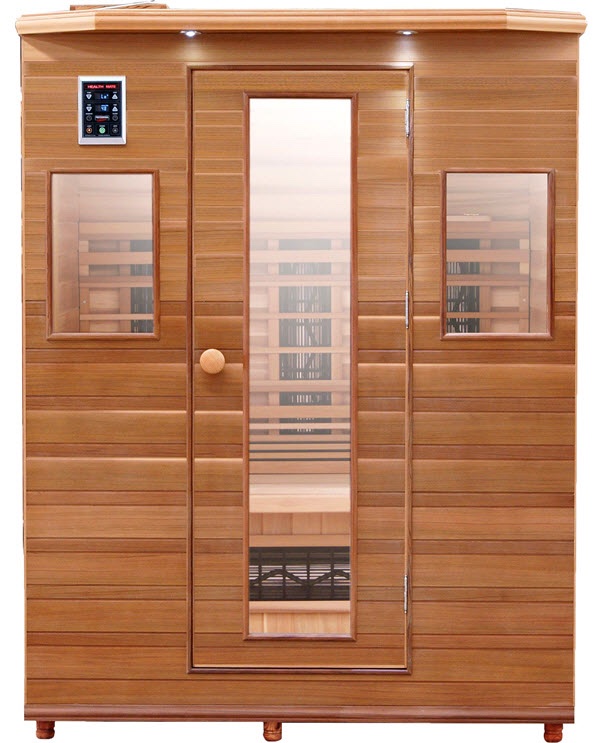Saunas have become increasingly popular for their health benefits, including relaxation, improved circulation, and detoxification. However, like any wellness practice, using a sauna requires understanding and adherence to safety guidelines. As you prepare for your next session in the year 2024, it’s essential to know the safety measures required to ensure a beneficial and safe experience.
Understanding Your Health Condition
Before stepping into a sauna, it’s crucial to assess your current health condition. People with certain medical issues, such as heart disease, high blood pressure, or respiratory problems, should consult their healthcare provider before using a sauna. Pregnant women and individuals with a history of heat-related illnesses should also seek medical advice.
Many top sauna stores provide comprehensive guides on how to use saunas safely. These resources are invaluable in helping you understand the impact of high heat on the body and the necessary precautions. It’s also worth noting that even healthy individuals should avoid saunas if they are feeling unwell, dehydrated, or have consumed alcohol. Recognizing your health status ensures that you can enjoy the sauna without putting yourself at risk.
In addition, some medications can affect your body’s ability to regulate temperature or cause dehydration, so it’s wise to discuss sauna use with your doctor if you’re on prescription drugs. Health assessments should be part of your regular wellness routine, especially if you frequently use saunas.
Hydration Is Key
Staying hydrated is one of the most critical aspects of sauna safety. The high temperatures in a sauna can cause your body to lose a significant amount of fluids through sweat. It’s essential to drink plenty of water before, during, and after your session to prevent dehydration.
Dehydration can lead to dizziness, headaches, and more severe health issues. Drinking water or electrolyte-replenishing beverages helps maintain your body’s fluid balance. Avoid alcohol and caffeinated drinks, as they can contribute to dehydration. Additionally, many top sauna stores recommend having a bottle of water within easy reach while you relax. Keeping hydrated helps your body manage the heat more effectively and ensures that you can fully benefit from the sauna’s therapeutic effects.
Limit Your Time
It’s important not to overstay in the sauna. Sessions should typically last between 15 to 20 minutes. Prolonged exposure to high heat can lead to overheating, which can cause symptoms such as dizziness, nausea, and fainting.
If you’re new to using saunas, start with shorter sessions and gradually increase the time as your body becomes accustomed to the heat. Listening to your body is essential; if you feel lightheaded or uncomfortable, it’s time to exit the sauna. For more detailed guidance on session lengths and other tips, you can refer to this sauna usage blog.
Taking breaks between sessions can also be beneficial. This practice allows your body to cool down and reduces the risk of overheating. Alternating between the sauna and a cool environment, such as a cold shower or a cooling room, helps to maintain a safe and comfortable experience.
Proper Sauna Etiquette
Sauna etiquette is not just about manners; it also contributes to a safe and enjoyable experience for everyone. Always shower before entering the sauna to remove any dirt, oils, or lotions. This practice not only maintains cleanliness but also helps your body sweat more effectively.
Wear a towel or a sauna-appropriate outfit to maintain hygiene and comfort. Avoid bringing electronic devices into the sauna, as the heat can damage them and pose a safety risk. Respect the space and peace of others by keeping conversations quiet and refraining from using strong fragrances.
For additional tips on maintaining proper sauna etiquette, this etiquette guide provides a comprehensive overview that can enhance your sauna experience. Good etiquette ensures that everyone can enjoy the sauna’s benefits without disruptions or discomfort.
Listen To Your Body
Your body’s response to the heat is the best indicator of how long you should stay in the sauna. Pay close attention to how you feel throughout your session. If you experience any discomfort, such as dizziness, headache, or shortness of breath, exit the sauna immediately and cool down.
Cooling down is an essential part of the sauna experience. After leaving the sauna, take a cool shower or sit in a cooler environment to allow your body temperature to normalize. This process helps prevent sudden changes in blood pressure and reduces the risk of fainting.
Saunas can be incredibly beneficial when used correctly. By listening to your body and following safety guidelines, you can enjoy all the benefits without any adverse effects. Additionally, taking a few minutes to relax and hydrate after your sauna session can enhance the overall experience and help your body recover.
Conclusion
Sauna safety is paramount to ensure a positive and beneficial experience. By understanding your health, staying hydrated, limiting your time, practicing proper etiquette, and listening to your body, you can enjoy the many benefits that saunas offer. Whether you’re a seasoned user or new to saunas, adhering to these safety measures will help you make the most of your sessions in 2024. Stay informed, stay safe, and enjoy the rejuvenating experience of a sauna. Embracing these guidelines ensures that each sauna session is not only relaxing but also healthful and secure.



